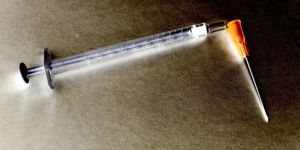Lichen goldmine found in Alaska fjords
Did you hear the story of a fungus meeting algae, and they took a lichen to each other? Well, apparently it’s a pretty common story up in the fjords of Southeastern Alaska, where scientists from the University of Alberta report that lichen diversity is up the wazoo.
Lichens cover approximately 7% of the Earth’s surface and some species can live for as long as 10,000 years. The diversity amongst lichens is highlighted in the new research published in Cambridge University Press’s The Lichenologist.
The international team behind the study, led by assistant professor of Biological Sciences Toby Spribille, has identified and described over 900 species of lichen - 27 of which are new to science - in Alaska's Glacier Bay National Park.
"This level of novelty biodiversity is usually associated with 'lost valleys' in the tropics," says Spribille, Canada Research Chair in Symbiosis. "To find this in Southeast Alaska really speaks to how little we still know about coastal rainforests. There are so many new species to science that if you know what to look for, you can average one new species to science per day of fieldwork."
The scientists looked at four different national parks in southern Alaska and counted over 1300 species among them. Many of the species are unique to specific parks and even specific regions within parks. For example, in Glacier Bay National Park, the team saw that the species differed in every fjord. "Of 950 species, we found only 14 species common to all sectors of Glacier Bay," commented Spribille. "It makes you wonder what remains to be discovered in all the areas we couldn't get to."
The scientists hope that their findings will guide future conservation management policies in the coastal rainforest ecosystem. "At high latitudes, biodiversity is locked up in other groups of organisms -- and in Alaska, lichens are clearly one of those groups," said Spribille. "This ecosystem is clearly very old and very diverse for some species groups. Each island and valley is different. As ecosystems go, it is definitely one that I'd label 'handle with care.'"
Sources: Science Daily, The Lichenologist









